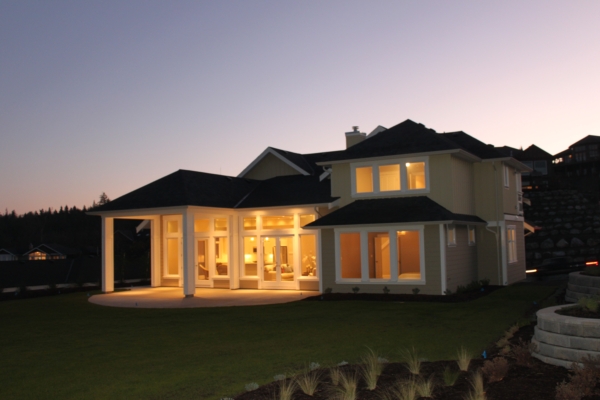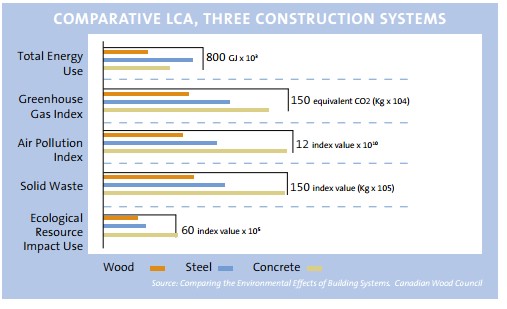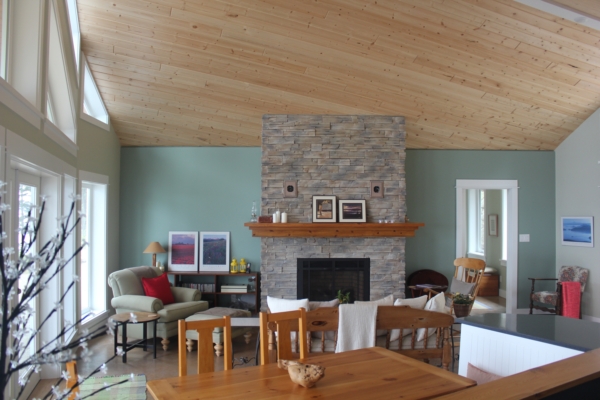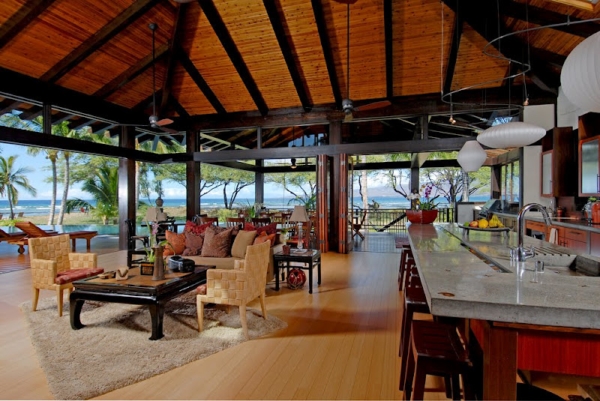Building green, using wood!
The choice of design, construction and products used to build your home has a major impact on the world’s environment. Building Green and thoughtful designs can make structures more efficient and reduce their affects on the environment and human health throughout its lifetime. Green buildings are designed to be durable, adaptable and long lasting. They use less energy, less water, and fewer and/or smarter materials.

– Renewable Resource
Wood is the only major naturally renewable resource for building materials. It grows naturally, using solar energy and Canadian wood comes from responsibly sustainable sources that are third-party certified. Third-party certifiers ensure that materials are carefully managed to produce a perpetual supply and to help preserve these natural resources for future generations.
– Energy Efficient
Wood has insulating properties rated 15 times more than concrete and 400 times better than steel. The air pockets in the cellular structure of wood help reduce the energy needed for heating and cooling your home.
A study conducted by the Consortium for Research on Renewable Industrial Materials (CORRIM) used life cycle assessment to compare the environmental impact of homes framed with the most common types to each city. Wood and steel in Minneapolis and wood and concrete in Atlanta. It found that the homes framed in steel and concrete would need 17 and 16 per cent more embodied energy than their wood-framed counterparts.
Life cycle assessment is a performance-based process that examines the full impact that building design and ways of construction have on the environment, measuring throughout all the phases of their life.

– Environmentally Friendly
Research shows that the least amount of energy is required to manufacture wood products, and that this process has the lowest impact on air and water quality. Using wood can offset climate change since trees absorb carbon dioxide as they grow, and the resulting products continue to store much of this carbon for decades or even centuries.
– Durable
Studies reveal that there is virtually no waste during the manufacture of wood products. Wood waste can be burned for energy, replacing the use of non-renewable resources like fossil fuel.
Wood has long been a popular building choice, however is often not considered where longevity is important; it is commonly assumed that wood structures have shorter service lives than buildings made of other materials. Survey data by Canadian Wood Council and FP Innovations shows that to be incorrect. Read a study of demolished buildings showing that structural material isn’t a factor in service life. In fact, the wood buildings in their demolition survey lasted longer than the others.
Engineered wood products make building green easier by reducing waste at every stage and increasing versatility and strength. Engineered wood products offer several increased design opportunities.
Many wood products have a service life of greater than 50 years and often require little energy in maintenance.
Wood is resistant to some of the chemicals destructive to steel and concrete. For example, wood is often the material of choice when exposed to: organic compounds, hot or cold solutions of acids or neutral salts, dilute acids, industrial stack gases, sea air and high relative humidity.
– Recyclable
Wood buildings can easily be redesigned to suit changing needs, whether this involves adapting to new uses or de-constructed so materials can be reused or recycled. A study for the Chartwell School in the United States found that wood offers the best opportunities for reuse – most concrete cannot be reused, and re-fabricating steel requires about half of the energy required to refine it from ore.
– Health & Wellness
The natural and warm aspects of a wood design generate positive feelings that can contribute to a person’s overall sense of comfort and welfare. This can improve productivity and performance in the home, in an office or in a school.
Wood floors contribute to better air quality by minimizing the collection of microbes and dust.
Building green and concern for our environment has spurred the use of building materials and structural designs that are more environmentally responsible, cost-efficient to operate, and are generally healthier for occupants.
Building Green- Canadian wood; your green and renewable choice!


Sources:
